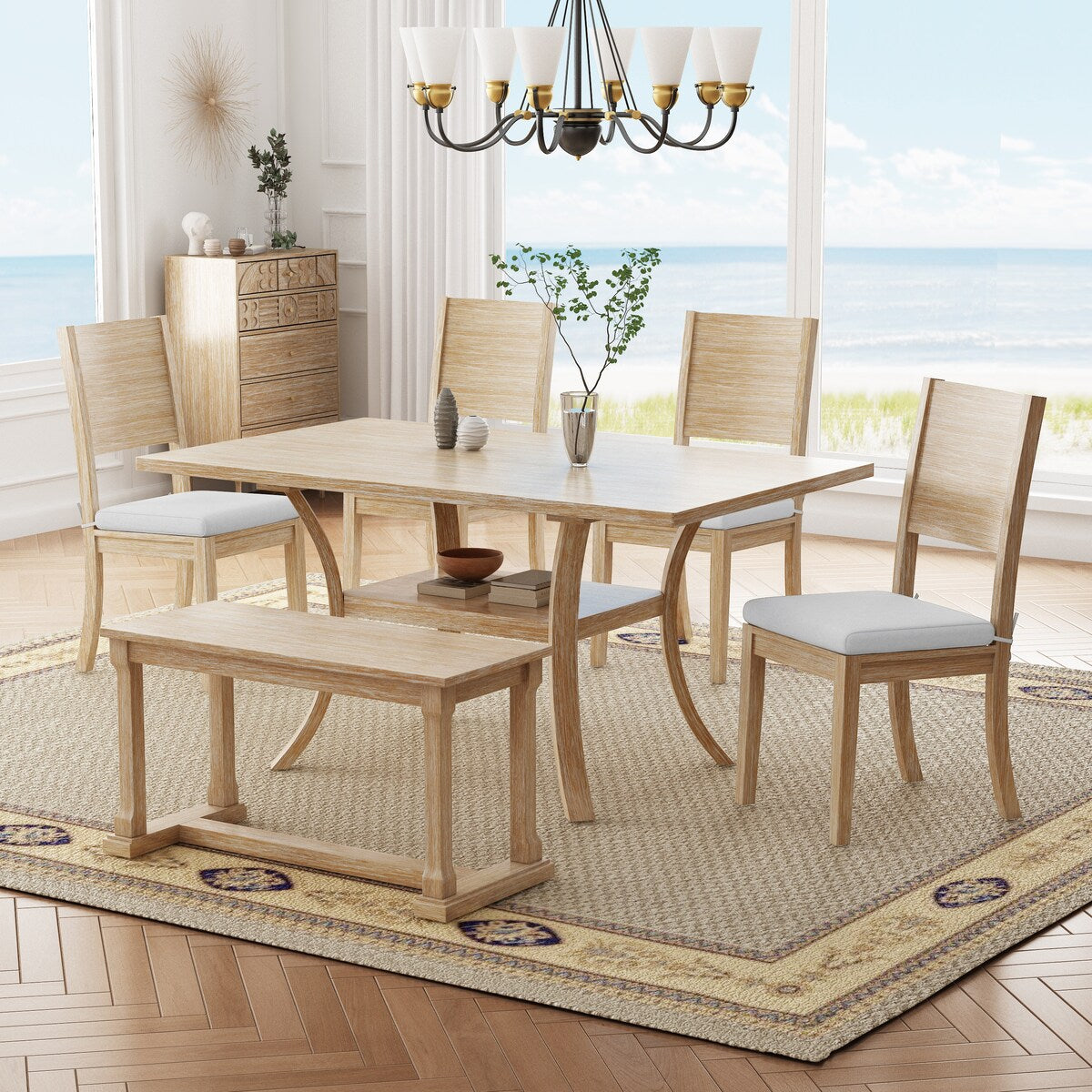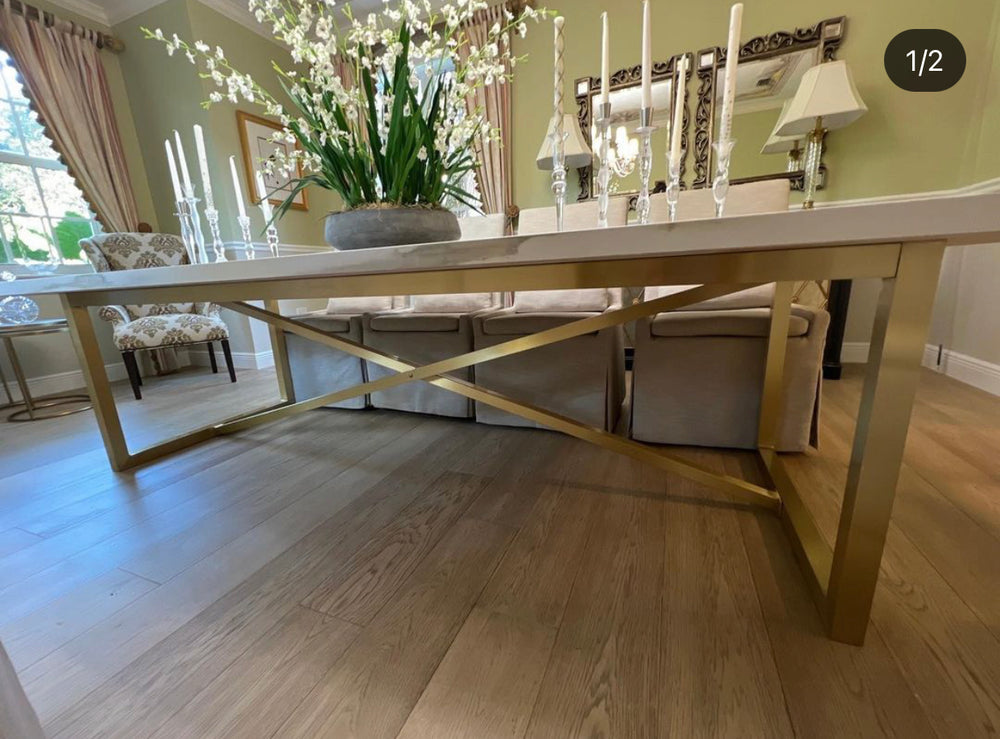Professional Tips for Putting Up Dining-room Table Legs for Optimum Stability
When it involves mounting eating space table legs, achieving maximum stability is paramount for both functionality and aesthetic appeals. The process begins with picking the appropriate materials and hardware, adhered to by thorough alignment and factor to consider of weight distribution. Each step plays an important duty in making certain that the ended up product holds up against everyday usage without endangering safety or design honesty. However, recognizing the subtleties of these components can significantly influence the general outcome. What particular techniques can improve security even better?
Choose the Right Legs
When selecting the suitable legs for your dining-room table, it is necessary to think about both capability and looks. The legs you choose will considerably impact the overall layout and stability of the table. Review the table's planned usage; if you expect regular events, tougher legs, such as those made from strong timber or metal, may be much more suitable, as they supply raised durability and assistance.
Typical dining tables commonly vary from 28 to 30 inches in height, so make sure the legs align with this requirement for comfort. Conical legs can include a contemporary touch, while transformed legs might communicate a much more classic aesthetic.

Select Appropriate Equipment
How can the best equipment boost the stability and longevity of your dining-room table? The option of suitable hardware is critical to ensuring that the legs of your table are firmly attached and able to endure regular usage. High-quality screws, bolts, and braces provide the necessary toughness to sustain the weight of the table, in addition to any kind of added loads put upon it during gatherings or meals.
When picking screws, select those made from resilient products such as stainless-steel or brass, which resist corrosion and preserve integrity with time. The length of the screws is equally important; they must penetrate deeply right into the table's structure without compromising honesty. For bolted connections, take into consideration using lock washers to stop loosening because of vibration or activity.
Furthermore, making use of corner braces can add additional assistance, particularly for larger tables or those with much heavier tops. These braces distribute weight uniformly and aid maintain the table's form. Ensuring that the hardware you choose is ideal for the details materials of your table will additionally boost its overall security and longevity, allowing you to enjoy your dining experience for years ahead.
Ensure Correct Positioning
Appropriate placement of dining-room table legs is necessary for both visual charm and practical stability. Misaligned legs can lead to an irregular table top, which might not only be aesthetically unappealing yet likewise compromise the table's use. To achieve ideal alignment, start by measuring the distance from the table's corners to the leg add-on points. This ensures that each leg is positioned equidistant from the sides, producing a well balanced appearance.
Use a degree during installment to validate that each leg is perpendicular to the tabletop. This step is critical, as also small disparities can rise right into considerable stability issues with time. It is recommended to mark the desired leg settings on the underside of the table with a pencil or covering up tape before protecting them. This technique acts as a visual overview, allowing for anchor modifications as required.
Moreover, confirm the alignment after the first screws are tightened, as modifications might be needed before totally safeguarding the hardware. By focusing on proper placement, you not only enhance the table's total design yet likewise ensure that it continues to be stable and functional for many years to come.

Take Into Consideration Weight Circulation
After making sure appropriate alignment of the dining-room table legs, it's vital to think about weight distribution to improve security and capability. dining room table legs. Proper weight circulation is vital in stopping wobbling and ensuring that the table can sustain its designated load without threat of tipping or falling down
When positioning the legs, ensure they are put at equal distances from the facility of the table to equally distribute the weight throughout the structure. Think about the weight of the tabletop and any type of things that will regularly relax on it, such as attractive pieces or tabletop devices. Tables with much heavier surfaces must ideally have legs located closer to the corners, as this maximizes the base of assistance and minimizes the danger of instability.
Additionally, if the table is planned for use in a high-traffic location, take into consideration making use of much heavier products for the legs or adding maintaining elements, such as cross-bracing or a reduced rack - dining room table legs. These modifications can aid maintain equilibrium and prevent moving throughout use. Eventually, a well-considered weight circulation technique will significantly browse around here improve the table's overall performance, guaranteeing it continues to be a functional and appealing focal point for your eating area
Test Stability Prior To Usage
Evaluating the security of the dining area table before use is a critical step that needs to not be overlooked. Ensuring that the table is protected and steady can avoid accidents and lengthen the lifespan of the furnishings. Begin by applying gentle stress to various points on the table surface. Press down on the center and after that along the edges, changing or observing any kind of wobbling. If the table shows instability, identify the legs or joints that may require change.
Next, inspect that all bolts and screws are tightened appropriately. Loosened links can lead to instability and potential damages with time. If essential, make use of timber adhesive on joints to improve stability, guaranteeing to enable appropriate drying time.

Final Thought
To conclude, the setup of eating area table legs requires careful consideration of products, hardware, positioning, and weight circulation to attain maximum security. By picking top quality fasteners and durable legs, making sure precise placement, and dispersing weight evenly, the structural stability of the table can be significantly enhanced. Carrying out a security examination prior to routine use even more makes certain that the table will certainly hold up against everyday pressures, thus giving a trusted and safe dining experience.
When it comes to installing dining space table legs, achieving optimum stability is paramount for both capability and looks. The legs you pick will significantly influence the total design and security of the table (dining room table legs). Common eating tables generally vary from 28 to 30 inches in elevation, so ensure the legs line up with this requirement for comfort.Proper placement of eating space table legs is essential for both aesthetic charm and practical security.In verdict, the installation of eating area table legs needs mindful consideration of materials, alignment, weight, and hardware distribution to accomplish optimum stability